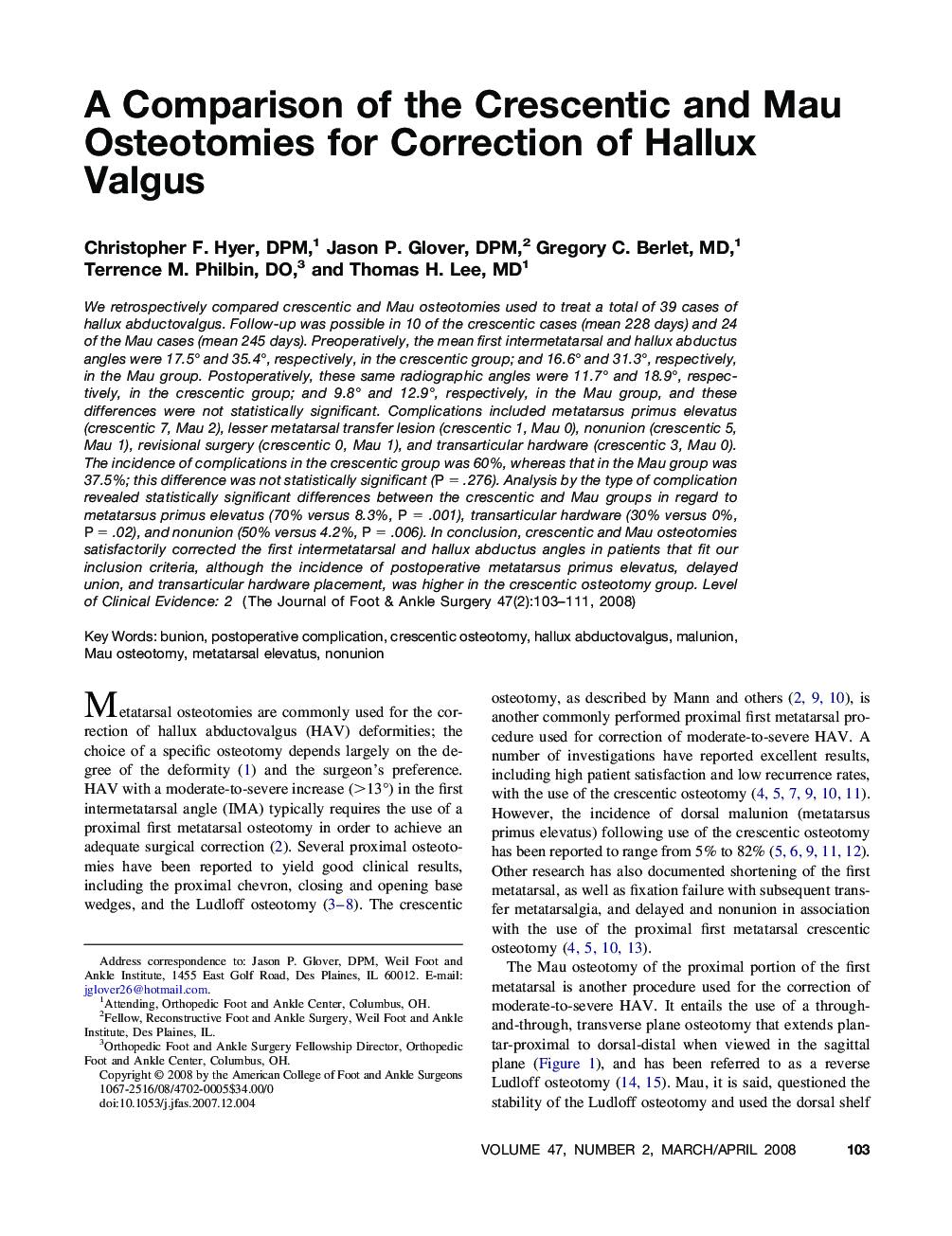| Article ID | Journal | Published Year | Pages | File Type |
|---|---|---|---|---|
| 2720755 | The Journal of Foot and Ankle Surgery | 2008 | 9 Pages |
We retrospectively compared crescentic and Mau osteotomies used to treat a total of 39 cases of hallux abductovalgus. Follow-up was possible in 10 of the crescentic cases (mean 228 days) and 24 of the Mau cases (mean 245 days). Preoperatively, the mean first intermetatarsal and hallux abductus angles were 17.5° and 35.4°, respectively, in the crescentic group; and 16.6° and 31.3°, respectively, in the Mau group. Postoperatively, these same radiographic angles were 11.7° and 18.9°, respectively, in the crescentic group; and 9.8° and 12.9°, respectively, in the Mau group, and these differences were not statistically significant. Complications included metatarsus primus elevatus (crescentic 7, Mau 2), lesser metatarsal transfer lesion (crescentic 1, Mau 0), nonunion (crescentic 5, Mau 1), revisional surgery (crescentic 0, Mau 1), and transarticular hardware (crescentic 3, Mau 0). The incidence of complications in the crescentic group was 60%, whereas that in the Mau group was 37.5%; this difference was not statistically significant (P = .276). Analysis by the type of complication revealed statistically significant differences between the crescentic and Mau groups in regard to metatarsus primus elevatus (70% versus 8.3%, P = .001), transarticular hardware (30% versus 0%, P = .02), and nonunion (50% versus 4.2%, P = .006). In conclusion, crescentic and Mau osteotomies satisfactorily corrected the first intermetatarsal and hallux abductus angles in patients that fit our inclusion criteria, although the incidence of postoperative metatarsus primus elevatus, delayed union, and transarticular hardware placement, was higher in the crescentic osteotomy group. Level of Clinical Evidence: 2
